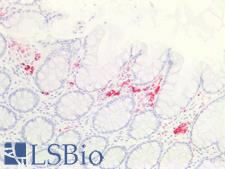Login
Registration enables users to use special features of this website, such as past
order histories, retained contact details for faster checkout, review submissions, and special promotions.
order histories, retained contact details for faster checkout, review submissions, and special promotions.
Forgot password?
Registration enables users to use special features of this website, such as past
order histories, retained contact details for faster checkout, review submissions, and special promotions.
order histories, retained contact details for faster checkout, review submissions, and special promotions.
Quick Order
Products
Antibodies
ELISA and Assay Kits
Research Areas
Infectious Disease
Resources
Purchasing
Reference Material
Contact Us
Location
Corporate Headquarters
Vector Laboratories, Inc.
6737 Mowry Ave
Newark, CA 94560
United States
Telephone Numbers
Customer Service: (800) 227-6666 / (650) 697-3600
Contact Us
Additional Contact Details
Login
Registration enables users to use special features of this website, such as past
order histories, retained contact details for faster checkout, review submissions, and special promotions.
order histories, retained contact details for faster checkout, review submissions, and special promotions.
Forgot password?
Registration enables users to use special features of this website, such as past
order histories, retained contact details for faster checkout, review submissions, and special promotions.
order histories, retained contact details for faster checkout, review submissions, and special promotions.
Quick Order
PathPlusTM ACP5 / TRAP Antibodies
ACP5 (Acid phosphatase 5, Tartrate-resistant acid phosphatase, TRAP) is an iron-containing glycoprotein that catalyzes the conversion of orthophosphoric monoester to alcohol and orthophosphate. Broadly, it functions in skeletal development, bone mineralization, collagen synthesis and degradation, as well as dendritic cell maturation and macrophage recruitment. ACP5 is the most basic of the acid phosphatases and is the only form not inhibited by L(+)-tartrate. It is expressed at high levels by osteoclasts, macrophages and dendritic cells. Two forms circulating in human blood (designated 5a and 5b) are derived from different cell types and have different functions. 5a is derived from macrophages and dendritic cells and is a marker of inflammatory conditions. 5b is derived from osteoclasts and is a marker of bone resorption. It is believed to initiate osteoclast differentiation and proliferation, and is capable of degrading skeletal phosphoproteins such as osteopontin. Separately, ACP5 is thought to function in hyperplastic obesity, and is associated with morbid obesity in mice when overexpressed. In immunohistochemistry, ACP5 has membranous staining. It is a useful positive marker for B lymphocytes of the marginal zone and osteoclasts in normal tissue, and for a range of cancers including hairy cell leukemia, mantle cell lymphoma, primary mediastinal B cell lymphoma, and some splenic marginal zone lymphomas.
References: The UniProt Consortium. Nucleic Acids Res. 47: D506-515 (2019); Nucleic Acids Res. 2016 Jan 4;44(D1):D733-45, PMID:26553804; Autoimmunity. 2008. 41(3), DOI: 10.1080/08916930701694667; Biomarkers. 2017. 22 (8), DOI: 10.1080/1354750X.2017.1334155; Hum Pathol 2005;36:945, PMID: 16153456;
1 PathPlusTM Antibody

☰ Filters
Products
Antibodies
(1)
Type
Primary
(1)
Target
ACP5 / TRAP
(1)
Reactivity
Human
(1)
Application
IHC-P
(1)
WB
(1)
Flo
(1)
ELISA
(1)
Host
mouse
(1)
Product Group
PathPlus Cancer
(1)
PathPlus Cancer Pathology
(1)
Isotype
IgG1
(1)
Clonality
monoclonal mc
(1)
Clone
5C5E7
(1)
Format
Unconjugated
(1)
Epitope
aa221-325
(1)
Publications
No
(1)

Cancer Pathology
Cancer
ACP5 / TRAP Mouse anti-Human Monoclonal (aa221-325) (5C5E7) Antibody
Human
ELISA, Flo, IHC-P, WB
Unconjugated
100 µl/$375
Viewing 1-1
of 1
product results











